How to lose weight fast in just 3 weeks - The Step by Step Full Guide (PART 2)
hey guys, welcome to the second part of the guide:
How to lose weight fast in just 3 weeks - The Step by Step Full Guide PART 1

During your diet, your energy sources from protein and essential fatty acids will help your metabolism to continue running and burning those extra carbohydrates (or stored fat) for fuel.
After 30 days taking EPA/DHA supplements, you will really see and feel these benefits. So be sure to continue on with EPA/DHA well after this diet to increase health, maintain (and still lose) weight and to keep fat from coming back.
EPA/DHA balance should be 2:1. Based on the research I’ve read, the appropriate amount is around 2g EPA to 1g DHA each day. For most “regular” strength fish oils on the market, this comes out to about 10 EPA/DHA capsules each day or 5 teaspoons of straight fish oil.
Fish oil also has other benefits, such as:
• Reduces inflammation
• Eliminates joint pain
• Improves vision
• Increases mental focus
• Treats ulcers, Crohn’s disease, and colitis
• Provides healthier gums
• Gives you smoother skin, hair and nails
• Decreases triglyceride levels
• Increases daily calorie burn
like a lot but it will get your EPA/DHA levels up to where they need to be for optimum health and ease of fat burning.
Carbohydrates
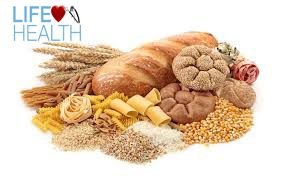
Although carbohydrates are the most common source of energy in humans, the simple fact is that there is not a single carbohydrate that is essential to human life. Also, you should note that sugar provides absolutely ZERO nutritional value – ZERO!
Carbohydrates are classified into two types: simple & complex.
Simple carbohydrates are also known as simple sugars. Simple sugars are those found in refined sugars (and the foods they are made with, such as cookies, candies, etc.) but also in food like fruit and milk.
Complex carbohydrates are known as starches. Starches include grain products such as cereals, bread, pasta, crackers and rice. Like simple carbohydrates, complex carbohydrates can be refined or left unrefined. Refined carbohydrates are considered to be less healthy as the refining process strips away much of the vitamins, protein and fiber. Unrefined carbohydrates cause less insulin spike and because of that, they are considered to be the most healthy of the carbohydrates.
Regardless of whether the carbohydrates are simple or complex, they both cause spikes in blood
sugar. As you will see shortly, these spikes in blood sugar are the #1 cause of unwanted body fat.
Fiber

Fiber is actually a carbohydrate, but I felt the need to devote a specific section to fiber because of the misinformation surrounding it. In most low-carb diets, fiber carbohydrates are not counted as “dangerous” weight-gaining carbohydrates. This is because fiber cannot be digested by the human body. Since fiber is not digested by the body, it does not create the rapid rise in blood sugar like other carbohydrates and therefore it doesn’t have the insulin response that other carbs do.
But beware. There are two schools of thought on fiber.
While modern medicine encourages a diet high in fiber, there are other medical researchers who state that too much fiber is the cause of numerous diseases and irregularities such as constipation, IBS, Crohn’s disease, colon cancer and others.
If you’d like to see some of the latest research on fiber and how it may be causing irreparable damage to your body, I strongly encourage you to visit www.GutSense.org.
Now, that being said about fiber… in normal does, fiber is not going to create any complications for you. It will actually make you feel full faster. However, you should be sure to get your fiber from vegetables and salad greens rather than forcing yourself to get 30 grams per day as recommended by the mainstream medical community.
When you try to “force” the fiber by consuming fiber supplements, that is when the trouble starts.
If you are concerned about constipation, some researchers believe that constipation itself is caused by too much fiber in the diet. Increasing your water intake during this diet is essential to good health, proper kidney functioning… and it has remarkable effects on relieving constipation.
Water

Most people I know are guilty of not drinking enough water. Drinking adequate amounts of water every day is absolutely essential for weight loss. If you don’t drink enough water, you simply will not get the full weight loss benefits that you’re after.
Water helps your kidneys work at full capacity. When your kidneys aren’t working at full capacity, the liver needs to help out. The problem with this is that the liver is responsible for metabolizing fat in your body.
When your liver is helping out the kidneys, it can’t do its job at full capacity as far as metabolizing the fat we need to burn.
You will lose water weight along with body fat. Remember, water weight is still weight and partly responsible for bloat and tight-fitting clothes.
The fact is, carbohydrates are hydrophilic (which means they cause water retention) and water retention is not something we want. Protein, on the other hand, encourages water to be released from the body.
Once you restrict your carbohydrate intake, you will begin to let loose some of that stagnant water that is being stored in your body. Because of this, it is essential that you consume enough water every day to avoid dehydration.
Further, water acts as your body’s filter, flushing out dead cells and waste. Because you are burning a great deal of fat during this phase, you will need ample water to help flush out the by-product waste of fat burning.
You will find that when you restrict the amount of carbohydrates you eat and increase the amount of water you drink, your body stops storing water and will use it more effectively. This results in a lighter and “cleaner” body.
My advice is to drink 8-10 glasses of water every single day. This amounts to about a half gallon of water.
This may seem like a lot of water at first, and you may have to actually force yourself to drink that much.
However, once you do this for a while, you will regain your natural thirst and actually be thirsty for this much water every single day. And again, once you begin drinking this much water, you will find that your body will not retain water, but will instead use it to flush your system - keeping it clean and functioning right.
Metabolism
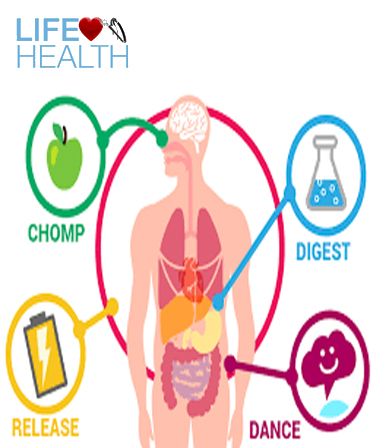
The primary function of our metabolism is simply to provide the right amount of fuel (at the right time) to keep our bodies alive and functioning properly. It accomplishes this through a complex series of chemical reactions whereby food is converted to the energy we need.
When we eat, the food we swallow enters our digestive tract and is broken down by digestive enzymes. Carbohydrates are converted to glucose, fats to fatty acids and protein to amino acids.
Once these nutrients are broken down, they are absorbed by the bloodstream and carried into the cells of the body. Our metabolism then works to release these nutrients as energy, using them to build and repair lean tissue or store them for later use.
There are two basic metabolic processes—one is constructive and is responsible for building and storing energy for the body. The other is destructive, though in a positive sense, as it breaks down nutrient molecules to release energy. The constructive metabolic process is called anabolism, while the destructive process is called catabolism.
Anabolism: promotes the growth of new cells, the maintenance and repair of tissues, and the storage of energy—usually through body fat—for future use. Small nutrient molecules are converted into larger molecules of protein, carbohydrates and fat.
Catabolism: is responsible for immediately providing the body with energy to use. Instead of building up nutrient molecules, it breaks them down to release energy.
These two processes do not occur simultaneously but are balanced by the body based on several factors. Catabolism, in particular—though some attribute this to overall metabolism—has three components:
- Basal metabolism: Sometimes called resting metabolism, this is the metabolism component responsible for keeping you alive by ensuring normal body functions. Even if you are bedridden the whole day, basal metabolism is still at work.
Basal metabolism is the metabolism's main component, as 60-to-70 percent of the calories from the food you eat are used for this. People who want to lose weight usually aim for a higher basal metabolic rate (BMR).
- Physical movement: This can range from a simple moving of your fingers to strenuous exercise.
Adding physical movement to our lives increases the amount of calories our bodies need. When we reduce the amount of food we need, these calories must come from our stored body fat, as you will see.
- Thermic effect of food: this indicates the digestion and processing of the food you take in.
Depending on the type of nutrients you consume, approximately 10% of the calories of the foods you eat are burned through this. As you will see, the digestion of certain foods will require much more calorie expenditure than others. Protein takes a lot of calories to digest while carbohydrates take far less.
What Affects Metabolism?
Your metabolic rate, or how fast or slow your metabolism works, is influenced by a number of factors:
• Genetics: Yes, metabolic rate is also inherited. Sometimes this makes a world of difference between a person who can eat almost everything and not gain an ounce, and a person who easily balloons after indulging just once.
• Age: There are actually two schools of thought on the topic of age and metabolic rate.
On one hand, experts say that the younger you are, the faster your metabolism is. They believe that metabolism begins to slow down as you age. However, new evidence suggests that metabolism is largely based on our activity levels rather than age itself.
These studies focus more on the fact that as we age, we become less active due to a number of reasons (work, family and other obligations that keep us from being more active).
• Gender: Men have a faster metabolic rate – usually 10-15 percent faster – than women because their bodies have a larger muscle mass. Muscle plays a key role in a fast metabolism.
• Amount of lean body mass: As already mentioned above, more muscle = faster metabolism.
• Diet: Some foods will help you - some will only harm you. But calories are king in metabolism.
• Stress level: Stress is inversely proportional to metabolism. The more stress you are subjected to, the lower your metabolism will be.
• Hormones: Specific hormones metabolize specific nutrients. How well the hormones work, then, directly affects metabolism. To a certain extent, diet and stress levels affect the hormones involved in metabolism, as you will find out later. Hormonal disorders or imbalances can affect metabolism as well.
Looking at all these factors that influence metabolism, you now probably have a general idea of what you need to do to increase your metabolism—accept the things you cannot change, and work on those that you can!
Now that we have had a primer on metabolism and nutrients, let’s get started with the rules of fat loss and how we can begin applying them to real-world action.
The Undisputable Rules of Fat Loss
As mentioned in the introduction of this book, there are universal laws of fat loss which simply cannot be ignored or replaced. These rules absolutely, positively must be followed if you want to lose weight.
Fat-Loss Rule # 1: In order to burn fat and lose weight, you absolutely must create a calorie deficit over time.
Remember how I explained that we gain weight over time by consuming even just a few calories more than our body needs? Weight loss works the same way.
However, we are not going to lose weight at the same slow pace we gain it. Instead, we are going to “turbo charge” your fat loss.
But just keep in mind that the primary factor in weight loss is a calorie deficit over time. You simply MUST have this and you absolutely cannot lose weight without it.
Now as simple as this sounds, there is actually a lot more to it…
If you’re like most people, you’ve probably struggled with losing weight in the past.
You’ve probably tried to cut calories… but didn’t see the weight come off as expected. And there is a reason for this… and it’s for this reason that so many dieters become frustrated.
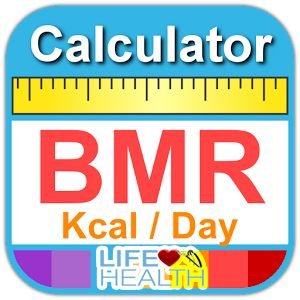
Here’s the thing… and this is VERY important. We all have our own specific Basal Metabolic Rate (BMR). BMR is the amount of energy (calories) your body needs/uses during the day, at rest or during sleep.
In other words, it’s the amount of calories that your body burns while keeping everything working properly. It does not take your physical activity into account… and neither will we while on this diet.
These BMR calories that are needed and used by your body every single day of your life can come from the food you eat…from your own body fat… or through a combination of the two. Obviously, we want our body to use fat for its energy needs because that’s what makes us thinner.
Getting a 100% accurate BMR requires a trip to the lab, being hooked up to some crazy-looking gizmos, and running a gas analysis on your body.
Luckily for us, science has come up with a formula to calculate our BMR based on sex, age, height and weight. It’s not going to be 100% exact… but it will give us a rough estimate that we can effectively work with to lose weight.
Most people are told that in order to lose weight, they just need to burn more calories than they consume.
While this sounds like good advice on the surface, it is faulty because it fails to take our BMR into account. And that’s why simplistic solutions like “eat less and exercise more” almost always end up in frustration and diet failure.
Here’s what I mean…
My BMR is approximately 1900, meaning my body is going to burn at least 1900 calories every day to keep me alive and functioning properly. Now, if I regularly consume more than 1900 calories each day, the weight is going to creep up on me (it is generally accepted that 3500 calories = one pound of fat).
So, let’s say I have never heard of BMR (most people haven’t) and I’m regularly eating 2500 calories each day without much physical activity.
Because I’m regularly eating about 600 calories over my BMR (1900) everyday, I’m gaining weight pretty steadily. Because that weight has crept up on me, I decide to go on a diet. In doing so, I take the advice of well-meaning doctors and fitness experts and decide to start “eating less” by cutting 500 calories a day from my diet.
Now, that’s a decent chunk of calories that I’ve eliminated from my diet, but even though I have cut 500 calories, I’m still consuming 100 more calories than my BMR. Because of this, not only am I NOT losing weight… I’m still putting on the pounds, albeit more slowly than I was before.
Now, because I’m not losing weight, I decide to “exercise more” and I start hitting the gym three days per week. During those exercise sessions, I’m burning about 300 calories per workout (that’s about average).
Since I am now eating 100 calories over my BMR, this regular exercise (300 calories) now puts me 200 calories below my BMR (per exercise day)… and now I’m finally losing weight (yay!).
But… since I have to burn 3500 calories to lose a pound of fat, and I’m only dropping 600 calories per week under my BMR, I’m only on schedule to lose just one pound of fat over the next six weeks! (Boo!).
And this is why so many diets fail…
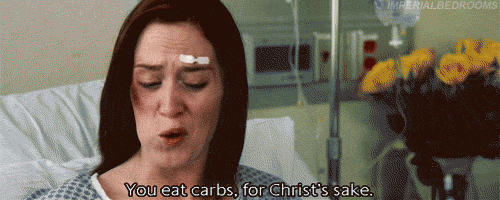
People start with good intentions but they give up in the long run because the dieting and exercise aren’t producing results fast enough.
And the reason for this is that most people do not know their BMR.
Once you understand your BMR, you can effectively devise an effective calorie-cutting plan which will result in real fat loss. As much as I would like to give you a magic pill, this is truly the driving factor of all weight loss.
Knowing your BMR puts you in control. You will learn how many calories your body actually needs. Then, you can cut out as many calories as you want in setting your weight loss plan.
Your body will then tap into your fat stores to make up for all the calories you deprive it of (through the calories you cut from your diet and any exercise/physical activity you engage in).
This is truly a liberating method for weight loss, as it doesn’t require you to understand hormones, fat mobilization, etc. It also lets you eat whatever you want as it works solely on calories rather than focusing on macronutrient ratios (carbs, fats, and protein).
If you take nothing else from this book, understand that creating a calorie deficit over time is the universal driver of fat loss—there is nothing else that can take its place.
The best part is that once you reach your goal weight, you can begin to enjoy all of your favorite foods and live a life without constantly worrying about the foods you can or cannot eat.
I enjoy pizza and cheeseburgers on a regular basis… and I don’t think a day goes by that I’m not enjoying some Ben & Jerry's ice cream… and I simply do not gain weight. This has nothing to do with carbs, fat or protein… and everything to do with BMR and calorie consumption.
Fat Loss Rule #2: Before you can begin to burn body fat, the fat must be mobilized!
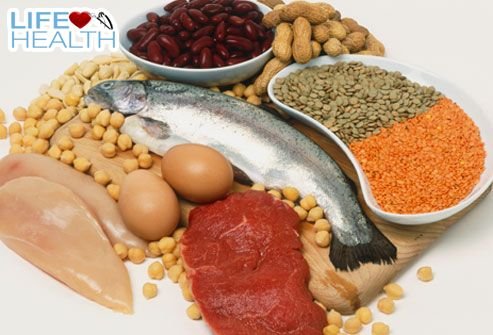
Fat burning is a greatly misunderstood concept. You see, burning fat is actually easy to do. It just takes a bit of physical activity. The fact is, we burn fat all day long.
The problem is that this fat we are burning is primarily the fat from the food we eat and the fat that is sitting around in our bodies (in the liver and intestines), but not the fat inside our fat cells.
Mobilizing body fat—getting the fat out of our fat cells to be burned—is the hard part, and losing this fat is what results in weight loss and a better looking body!
Right now, your fat cells are filled with triglycerides (three fatty acids and one glycerol molecule make up a triglyceride).
Because triglycerides are made up of three fatty acids bound together with a glycerol molecule, they are too large to leave the fat cells by themselves like free-flowing fatty acids can. Because of this, triglycerides must be mobilized from the fat cells so that they are available to be burned as energy.
When I say that fat must be “mobilized” what I mean to say is that those triglycerides must be broken back down into fatty acids so that they can “escape” the fat cells that they are stuck inside.
By first mobilizing the fat and then using that fat for energy, your body will become leaner. Fat mobiliz ation is the first step in the weight loss process.
Fat Loss Rule #3: You can control how much fat you mobilize
The rate at which fat can be mobilized is largely controlled by an enzyme called hormone-sensitive lipase (HSL). HSL is primarily controlled by insulin and the catecholamines.
When HSL is activated, fat can be mobilized. The problem is that when insulin or triglycerides (from the food you eat) are found in the bloodstream, HSL activity comes to a halt and fat cannot be significantly mobilized from your fat cells. Essentially, this means that anytime you eat, you will be unable to mobilize body fat.
The catecholamines (adrenaline and noradrenaline), on the other hand, increase HSL activity and drive fat mobilization.
So you can control how much fat you mobilize through your diet, by keeping insulin low and catecholamine high.
Fat Loss Rule #4: You must keep the catecholamines high and insulin low
As long as catecholamine levels are high and insulin levels are low, fat mobilization will occur.
For anyone who has struggled to lose weight, the reason is because your insulin levels are constantly high and your catecholamine levels are low.
That being said, the key to getting the fat out of your fat cells and ready to be burned lies in increasing catecholamines and decreasing insulin as much as possible. As mentioned, you can control both through diet and exercise (and via supplements).
How to Increase Catecholamines (and Lower Insulin)
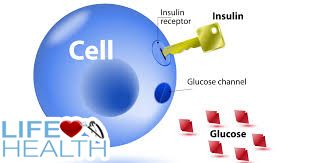
There are five main ways to simultaneously increase catecholamines while reducing insulin.
These methods include:
Reducing caloric intake
Dietary fasting
Reducing carbohydrate intake
Exercise
Supplements
Unlike most diet & exercise programs, we are going to employ all four of these methods in order to give our bodies the ultimate environment to release fat from our fat cells, so that it can be used by the body for fuel.
Before moving on into the specifics of the diet, I would like to first address each of the four fat-mobilizing elements above, and how each is going to help you strip away body fat in very rapid fashion.
Reducing Calories the Right Way
As stated, you absolutely must create calorie deficit over time if you want to burn body fat and lose weight.
There is no way around this, as a calorie deficit is a universal law.
When you create a calorie deficiency, your body must meet its BMR needs through the mobilization of your stored body fat. When you create a calorie deficit, you naturally reduce the amount of insulin your body sends to the bloodstream. At the same time, catecholamines increase and this results in the body’s ability to mobilize fat to meet the needs of your BMR.
Short-Term Fasting
Creating a BMR-related calorie deficit truly works like magic once you understand it and put it into play.
It simply works. Now, if you’re ready to “turbo-charge” your fat loss, there is no better way todo so than through intermittent fasting. Intermittent fasting not only helps ensure you are reducing calories (through fewer meals), it also lowers insulin to near zero and it dramatically
increases catecholamine levels so that your fat cells are opening up and letting the fat pour out of those cells like crazy!
Please, whatever you do, do not skip this section. Forget everything you’ve read or heard about fasting.
When done properly, short-term, dietary fasting is the absolute 100% quickest (and healthiest) way possible to strip your body of stubborn body fat. And there are dozens of well- researched medical studies which back this statement up.
Understand that our bodies are either in a fed state or a fasted state. As long as your body is in a fed state, it simply cannot mobilize your stored body fat for fuel. Once your body has entered a fasted state, however, things really get going… and the fat will literally melt off of your body.
The problem is that many of us spend as many as 20 hours a day in a fed state. Because of this, we can never really get into a serious fat-burning mode.
As you know, when we eat more calories than our bodies need each day, the extra calories are stored in the form of fat deposits. These fat deposits act as our energy reserves. If these energy reserves are not used, they simply accumulate, resulting in more and more weight gain.
The problem is that most of us never use our energy reserves and therefore, we do not lose weight.
You see, the body uses the food you eat as its primary source of fuel and it only uses your energy reserves when energy from the last meal is no longer available.
But in a world where food is cheap, easy to get, and very plentiful, most of us spend our days in a constantly fed state where we never have to tap into our energy reserves. Short term fasting reverses this trend.
When set up properly, you will be spending more time in a fasted state than a fed one, resulting in significant amounts of fat being burned from your body.
Please, do not dismiss intermittent fasting just yet. It is really not that hard to do… and the results you will see in just a few days are going to be soooo worth it!
Take it from someone who hadn’t missed a single meal in 35 years of life, short-term fasting is a walk in the park. I promise you that you are going to love it because you will FINALLY see your stubborn fat areas getting smaller and smaller.

Besides the incredible fat-burning effects you’re going to get, here’s a host of related health benefits associated with intermittent fasting:
• Creating a calorie deficit that leads to permanent fat loss
• Appetite control
• Reduced body fat levels
• Healthier cholesterol levels
• Increased growth hormone production (which increases fat mobilization even more)
• Lean body mass maintenance (fat will be gone and easy to keep off)
• Reduced inflammation
• Reduced risk of disease (cancer, diabetes, cardiovascular disease)
• A cleaner, well-rested and recharged digestive system
• Increased lifespan
• Autophagy - your body will “eat” its broken and ineffective cells.
• Increased blood flow to fat cells (this gets the stubborn fat out)
• Lowered insulin
• Increased catecholamines!
Those who know me know that I am a big proponent of short-term fasting. In fact, I have lost over 20 pounds of body fat in a single month simply by fasting for two 24-hour periods each week (lunch to lunch) over the course of a four week period. Yes, I can fast and still eat every day! Fasting works. And when done properly, you will strip body fat away like nothing else.
Now, for those who are calling “foul” because of what you’ve been told about “starvation mode” or a “slowed metabolism” - you can rest assured that short-term fasting will NOT consume your lean body mass nor will it slow your metabolism when done correctly (which you will learn how to do in the upcoming section).
In fact, as long as you engage in resistance training and keep your fasts to a maximum of 72 hours, you will enjoy tremendous fat loss with no loss of muscle or lean body mass… and without a decrease to your metabolism.
Before we move on, let me assure you that this slimming program does not call for any 72-hour fasts, so please do not be alarmed. You will learn some “tricky” ways to fast and still eat every day.
Usually, the second issue raised about fasting is hunger and hunger pangs. For this reason, some people will simply not give it a try. I have coached several people who were all for fasting, but when that first hunger pang came along they ran for the cupboards and refrigerators.
Hunger pangs do not indicate true hunger. These pangs are just a signal from your stomach to your brain telling you that the last meal you ate has been digested, and that if you don’t give it food soon it’s going to have to start burning fat.
Those who can’t fast will have to work a lot harder than those who engage in short-term fasting. If you want incredibly fast fat loss, a short-term fast here and there is truly the way to go.
Nothing works faster. Think about it. For the hours that you are not eating, your body switches to stored fat to supply you with your daily energy needs… the fat burned isn’t coming back—it’s actually gone for good!
As I and millions of others like me have learned, hunger pangs do not get stronger and stronger. Once you see that a short fast doesn’t kill you, you’ll probably become a big fan.
You’ll find that those hunger feelings just fade away when they are ignored. In fact, once you overcome the initial hunger pangs, you will find that it gets easier and easier to go without food.
During my longest fast ever (72 hours), when I finally broke my fast I still was not even hungry.
Hunger is primarily a state of mind. Your body has become accustomed to sending you hunger signals when it has used up the food in your digestive tract. This is not true hunger.
It’s our lazy body’s way of telling us to eat so it doesn’t have to go after body fat! Ignore those pangs and let your body go to work on your fat cells that it has conveniently been saving up for a “rainy day.”
If you think about it, eating is also habit-driven. When we wake up, we immediately reach for the Cheerios out of habit… even though we may or may not be hungry.
When it is lunchtime, we do the same thing… and dinner, of course, is no different. We have been told (through marketing) that breakfast is the most important meal of the day. Nonsense! Breakfast is the most important meal TO SKIP every day. As you will see, the simple method of skipping breakfast can be the answer to all of your weight problems.
To sum it up, short-term fasting is safe and ultra-effective. Medical research has also shown it to be seriously beneficial to your health and longevity. And not only that, it’s truly the easiest fat-burning method of all, because you can burn fat all day long without doing anything!
If you think fasting will be too hard, don’t go crazy and try to do a 24-hour fast on your first try.
Work yourself into it slowly by waiting longer and longer to eat your first meal. Skipping breakfast and having your first meal at lunch will do wonders.
Remember, the longer you go without food, the more fat you’re going to burn. Once you eat, fat burning stops.
So, most of the fat you are burning now is when you are asleep—and this is the time that physical activity is non-existent, so the amount of energy you need is very, very low. Yes, you are burning fat while you sleep but not as much as if you were awake and moving around.
Reduced Carbohydrate Intake
As I’ve stated, creating a calorie deficit over time is the driving factor of fat loss, regardless of the macronutrients you eat (carbs, fat, protein).
However, there are dozens and dozens of medical studies that have proven that by significantly reducing your carbohydrate intake, you can effectively create an environment where fat is more regularly being mobilized and used for energy.
By reducing carbohydrates in your diet, you effectively lower insulin while raising catecholamine levels. This is what makes a low-carb diet so incredibly powerful.
The reason a low-carb diet is so effective is because it “tricks” the body into thinking you are in starvation mode because you deprive the body of glucose (and glycogen).
Your body expects glucose to be available on a regular basis. When the body finds no glucose or glycogen, it immediately switches gears and starts to
burn fat as its primary energy source.
When you restrict carbohydrates in your diet, you will become leaner. This is an absolute fact.
When you increase your carbohydrate consumption, under the right conditions, you will get fatter.
This is not disputed. This is simply a matter of the human body’s response to your hormones and how they are affected by the foods we eat.
Here’s how it works…
When we eat carbohydrates, particularly those that are sweet or starchy, our blood sugar increases rapidly. When our blood sugar increases, our pancreas secretes insulin into the blood stream.
Insulin’s job is to bring our blood sugar back to normal levels.
It does this by moving the sugar out of the blood and into the muscles, liver and fat cells.
If not for insulin, this high blood sugar (aka glucose) would be toxic.
As you may know, diabetics need to add insulin to their bodies to keep them alive and functioning.
If not, the foods they eat would result in high blood sugar that could not be lowered, resulting in diabetic shock, diabetic coma or even death.
So insulin is a good thing with regards to keeping us alive, by alleviating high blood sugar levels that are triggered by carbohydrate consumption.
BUT… insulin is also very, very problematic with regard to our ability to lose weight.
As mentioned, when blood sugar is high, insulin’s job is to move that sugar out of the blood stream and into the liver and muscles to be used for energy. But there’s more to it. Insulin is also a storage hormone.
What this means is that when insulin is present in the bloodstream, as it is when we consume carbohydrates (sugar, starch), the excess carbohydrates (those that are not needed right away for energy) have to be stored somewhere.
So some of the carbs we eat are used for immediate energy.
If we don’t need that energy right away, those carbs (broken down into glucose) need to be stored somewhere—remember, insulin is moving it from our bloodstream to keep us alive!
The first places where this excess glucose is stored are the liver and muscles, in the form of glycogen. Our glycogen stores are our reserve tank for quick energy when sugar (glucose) is used up for the energy we needed. But here’s the thing…
Unlike fat cells, our glycogen tanks only hold so much. And in terms of "muscle glycogen stores," energy can only be used by the muscles that those "stores" are in.
So if your legs need energy, they cannot borrow glycogen from your arms and back, and vice versa.
So, if you’re eating a lot of carbs in your diet and you’re not working out regularly, your glycogen stores are probably already full. Because the glycogen stores are full, the body needs to put the excess carbs you eat somewhere else…
You guessed it…once those glycogen stores are full, any excess carbs are deposited into your fat cells. Unlike glycogen stores, fat cells grow and reproduce to store an unlimited amount of excess carbohydrates!
And, as I have already mentioned, not only does insulin force those excess carbohydrates and fat into our fat cells, it also slams the brakes on our body’s ability to mobilize and burn the fat that is already stored in our fat cells.
So, as long as there are high levels of insulin flowing through your blood stream, your body will be working to store fat rather than working to mobilize and burn it.
You simply cannot consume a carbohydrate-rich meal and burn fat at the same time.
Your body is either storing fat or burning it (fed or fasted). Always keep this in mind! If your body is in a fasted state, it becomes fed as soon as you start eating. This pulls the brakes on your fat-burning action.
A good thing to keep in mind is this: for every gram of carbohydrates you eat, your body is unable to burn at least that many grams of fat.
And… so long as you are eating carbohydrates, your body is storing everything it doesn’t need… right into your fat cells (making you fatter).
At the same time, those carbohydrates are making it impossible for you to burn stored body fat.
Keep in mind that our body is in constant need of energy— it needs energy whether we are out for a morning jog, cooking dinner, sitting on the sofa watching television or lying in bed sleeping.
While we tend to think we only need energy when we are physically exerting ourselves, you need to keep in mind that there is a lot your body is doing “behind the scenes” even while you sleep.
The fact is that our bodies are at work 24/7 to keep us healthy and functioning. And because of that, the body needs to fuel its work on a non-stop basis for as long as we live.
Another thing to keep in mind is that YOU can make a decision to have your body running on carbohydrates or to have it running on fat.
Contrary to popular belief, fat flows in and out of your fat cells (in the form of fatty acids) on a continuous basis throughout the day, making itself available to be used for energy.
The problem is… this fat cannot and will not be used for energy unless your insulin levels are way down. Insulin, however, will not be down as long as you’re eating carbohydrates.
Now, when we eat three meals per day and everything is working properly, your body will become fatter after eating a carbohydrate-rich meal.
It will become leaner in between meals after all the carbohydrates have been burned up, and the body begins to burn fat because it has run out of those carbohydrates.
The problem, however, is that when blood sugar spikes and insulin is secreted, blood sugar is normalized in a matter of minutes, while insulin remains “on guard” in the bloodstream for the next couple of hours—preventing fat to be burned during that time.
Understand that various cells in the body have a need for fat.
However, when those cells which need fat to function properly are not getting the fat they need (because of insulin present in the bloodstream), your blood sugar drops. Low blood sugar level is what tells your brain that you’re hungry…
and because you are hungry, you begin to eat again, before those fatty acids can ever be burned up.
When you follow up with another carbohydrate-rich meal, those fatty acids will need to be stored away, because your body is again going to have to secrete insulin to lower blood sugar…and to use that blood sugar—instead of fat—for energy over the next few hours.
And this starts the vicious cycle all over again—constantly prohibiting your ability to tap into those body fat stores.
By creating a calorie deficit (either with or without fasting) and by reducing carbohydrates, you create a phenomenal fat-mobilizing environment which simply cannot be beat.
Adding a quality workout program gives you the ultimate method for stripping away stubborn body fat.
With regards to glycogen stores, understand that you can use up that glycogen through exercise, and you can control those glycogen stores by the amount of carbohydrates you consume.
When you reduce carbs, you reduce glycogen stores.
This means the energy your muscles need will have to be fueled by fat - because there is no glycogen to provide energy. This means a lot more fat being burned up in the muscle!
Starvation Mode
Over time, the diet & fitness industry has bastardized the realities of the “starvation mode.” Most of us have been told that if you go without food for X number of hours, your body will enter “starvation mode” which results in a low metabolism and the inability to burn fat or lose weight.
They infer that if you enter starvation mode, the body basically “locks up” and puts a stop to any fat-burning.
I’m here to tell you that this is completely backwards.
The starvation response actually occurs AFTER your body has run out of energy, meaning it has depleted your fat stores and is not eating up your lean muscle mass to keep you alive. When this happens, your metabolism will, in fact, slow.
The starvation response (aka starvation mode) is a matter of the body slowing down its metabolism after PROLONGED periods of low energy intake.
The body gets its primary source of energy through the food you eat.
Once the contents of your digestive tract are used for energy, the body switches over to glycogen to fuel the body.
Once the glycogen stores are used up (6 hours max), the body then turns to using your fat stores for energy. This is EXACTLY why we have fat stores in the first place.
This provides fuel for the body when you have no food to eat.
And this works like magic for about 72 hours. At that time, if you are still without food, the body begins to fill its amino acid needs from your body’s lean mass.
Attacking your lean mass to get the amino acids your body needs to function properly will not immediately slow your metabolism down. However, we want to keep lean mass intact.
That being said, I would never recommend a fast lasting longer than 72 hours.
To sum this up, skipping meals here and there… and reducing calories...will not put your body into starvation mode.
Prolonged calorie restriction will. Keep this in mind when you begin to diet, as you will find it is vitally important to create a calorie deficit if you want to burn body fat.
Exercise

Exercise boosts metabolism and burns fat. It also lowers insulin and increases catecholamines… and it’s the best way to increase blood flow to adipose tissue and to transport fatty acids out of fat cells.
Exercise helps to burn fat because it requires you to move your muscles. Moving your muscles causes physiological changes that are necessary to maintain and build new muscle mass.
Every pound of muscle in your body needs somewhere between 50-100 calories to maintain that muscle mass.
And when you consider that fat is burned almost exclusively in your muscle, you can begin to see just how crucial it is to not only maintain the muscle you have, but to build new muscle as well.
Simply put, the more muscle you have, the more fat you will burn. Conversely, losing muscle (by lack of exercise) reduces your body's ability to burn fat.
In addition to all the calorie and fat-burning effects, exercise also has the remarkable ability to stimulate fat tissue by increasing blood flow to your fat cells.
This makes for easier fat mobilization—which is especially important to the stubborn fat areas like the hips, thighs, belly and buttocks, where insufficient blood flow is believed to be the cause of “stubborn body fat.”
That being said, understand that every time you exercise, you get a ton of fat-burning benefits. But also remember that physical fitness LOVES consistency. Being consistent with your workouts means serious results.
Exercise has a wide range of benefits besides fat burning and better fat mobilization.
Exercise also regulates appetite, improves sleep patterns, elevates mood, and increases energy levels and promotes a general feeling of well being. Exercise has also been shown to add years to your life, help you fend off many diseases and keep your body in far better health than those who do not exercise.
A recent study revealed that people on low-carb diets who do not exercise still burn more fat that those on low-fat diets who do exercise. And while you will burn more fat on this diet than anything you've ever tried before, we can still take those results and nearly double them with a good exercise program.
New research has shown that low-carb, high-protein diets coupled with resistance exercises significantly increase fat loss while improving body composition. This slimming method will not only result in a leaner body, but a more toned one as well.
And for women who still think that higher protein and resistance training will cause bulky muscles, fear not. While you will become more toned implementing this workout, I promise you will not “bulk up.”
Bulking up requires a significant amount of calories (and tons of carbs), a much more stringent weight training regiment and some hormone treatment before you ever look like those female bodybuilders you are trying not to look like.
Exercise on a Low Carb Diet
One of the chief complaints of people exercising while on low-carb diets is that they feel “drained” or lethargic. This usually only happens during the first week or so, as your body adjusts from burning carbohydrates (glucose and glycogen) to burning fat. It’s kind of like driving a car until you’re out of gas… only to then switch over to the reserve tank.
Remember, your body normally has quick energy available to it through the glycogen stores in your muscle. Without that glycogen, your muscles need to recruit stored fat for energy.
As your body depletes glycogen, you’re going to feel slow and tired. Although this is typically not a good feeling, you should understand that the end result is very positive, because this feeling lets you know everything is working—that glycogen stores are being cleared for more whole-body fat burning.
I’m not going to lie, working out on a low-carb diet is not a lot of fun. That’s why Exercise Routine is short… but seriously effective. And don’t worry about performance.
A recent study conducted at MIT tested the aerobic capacity of a group of subjects while on a diet high in carbohydrates for four weeks, and then tested them while on a low-carb diet after four weeks.
The participants complained of being lethargic during the first week of their low-carb diet but at the end of four weeks on the diet, they did not show a decrease in aerobic capacity from their regular diet.
Even better, the study showed that essentially all the calories being burned during the low-carb diet were from body fat!
Exercise when Fasting
I tend to do my workouts in a fasted state because I want to skyrocket my catecholamine levels and take advantage of the significant increase in growth hormone that comes with fasting, as well as adding to the already “turbocharged” fat-burning that is going on during my fast.
Research has shown that training in a fasted state does not limit your training efforts. In fact, it allows you to maintain your muscle (and even increase it) while burning loads of body fat.
Stubborn Body Fat
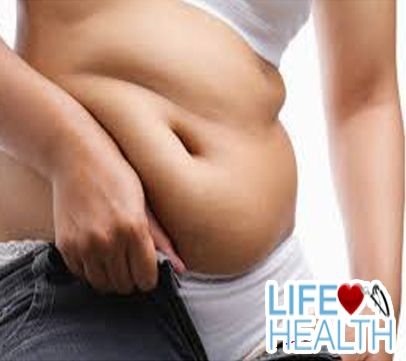
If you have ever dieted before, you’re probably well aware of the rear areas of body fat that seem next-to-impossible to get rid of. For many, these areas are typically their abs, love handles and lower backs. For women, the stubborn areas are their hips, thighs and buttocks. There is a biological reason that these are as are so hard to trim down… but we are going to take care of this problem.
As you now know, the catecholamines regulate fat mobilization. They are responsible for breaking down triglycerides into fatty acids and getting them out of the adipose tissue so that they can be burned for energy. In doing so, the catecholamines act on what’s known as “adrenergic receptors.”
These adrenergic receptors consist of alpha 1 and 2… and beta 1, 2 and 3 subtypes. When alpha-1 and the beta receptors are activated, they cause fat to be broken down. When the alpha-2 receptors are activated, however, fat breakdown comes to a halt.
Now here’s the thing…
Stubborn fat areas have a very high density of alpha-2 receptors (the bad stuff), which is why it is harder to break down and mobilize fat in stubborn areas. In order to attack this stubborn body fat, we must find a way to improve blood flow to the stubborn areas and inhibit alpha-2 receptors.
In addition to increasing catecholamines, fasting, reduced calories and exercise also increase blood flow. The low insulin levels associated with reduced calories, fasting, exercise and a low-carb diet inhibit those alpha-2 receptors. As far as fasting goes, the longer you remain in a fasted state, the more your body will mobilize fat from the stubborn areas.
Research has also found a particular supplement that has very beneficial effects in both increasing blood flow and inhibiting alpha-2 receptors.
This supplement is known as Yohimbine. Yohimbine is an alpha-2 receptor antagonist, meaning it stops the action of alpha-2 receptors while increasing fatty acid mobilization from the stubborn areas.
Yohimbine been shown to significantly increase fat loss through fat mobilization, increased blood flow and increased fat oxidation (fat burning). This is a supplement that works very, very well. I take it regularly and I highly recommend it.
FAT BURNING SUPPLEMENTS

Most of the so-called fat-burning supplements on the market are pure junk. While they may give you a little extra “punch” they are normally worthless considering the price you pay.
For fat burning, one of the most effective supplements you can use is coffee.
While caffeine is a powerful CNS stimulant by itself, there are compounds in coffee that have a unique and direct effect on fat cells, that makes them open and provide additional fat mobilizing effects beyond the stimulation of the caffeine by itself.
Drinking coffee in the morning in a fasted state (non-calorie sweetener and a drop of heavy cream is ok – but no sugar) is a great way to increase your fat mobilization and fat burning as it ramps up catecholamine levels, reduces insulin and blunts hunger.
COFFEE / YOHIMBINE HCL
A powerful supplement to take when you have your coffee is Yohimbine HCL.
I will typically have a Yohimbine HCL first thing in the morning along with 1-2 cups of coffee. About 2-3 hours later (while still in a fasted state) I will have another 1-2 cups of coffee with another Yohimbine HCL.
Studies have shown Yohimbine HCL to enhance fat mobilization by increasing blood flow to fat cells.
This works great for stubborn fat areas.
In the U.S. you can buy Yohimbine HCL over the counter. In many European countries, you will need a prescription, so this may not be a viable option for you.
(Include the Add-On of ProLab Caffeine Maximum Tablets if you don't drink coffee.)
COFFEE / NICOTINE
This next combo is rather controversial, but by far my favorite fat mobilizing/fat burning combo is coffee and nicotine (no I do not advocate smoking!).
This is perhaps one of the very best fat loss combinations in existence. Understand that nicotine is considered a toxic substance in high doses; however, it has shown to be relatively safe in low doses without the tar and other chemicals that are in cigarettes.
Nicotine has the remarkable qualities of preventing the body’s fat cells from taking in more fat.
Additionally, as new research has discovered, nicotine also has a unique compound which binds to fat cells and opens them up - in addition to the normal fat mobilization process.
What this means, essentially, is that more fat is released when nicotine is added to the other elements of this diet.
But beware! Because your fat cells are open, they are also susceptible to getting glucose stuffed into them! So, whatever you do, DO NOT CONSUME CARBOHYDRATES WHEN YOU ARE CONSUMING NICOTINE!
The ultimate 1-2 punch comes from consuming coffee and nicotine (in gum form) while you are fasting in the morning hours.
I have dropped ridiculous amounts of weight by eating my last meals at 6pm to 7pm and not eating until around noon.
During the morning I would drink a cup of coffee and then take a 1mg piece of nicotine gum every two hours (3 totals). Mint Is My Favorite Flavor!
Summary
Before setting up our diet, let’s do a quick review - and you can come back here without having to read through everything again, when you are all ready to get started.
- In order to burn fat and lose weight, you absolutely must create a calorie deficit.
- Your calorie deficit is based on your BMR. Just reducing calories won’t cut it.
- Before you can burn fat, the fat must be mobilized from your fat cells. Burning fat is not the hard part—mobilizing it is.
- Fat can only be mobilized when insulin levels are down and catecholamine levels are up.
These are usually found in opposition of each other. In other words, when insulin is low, catecholamines are usually high… and vice versa.
- We can lower insulin and increase catecholamines by reducing calories, fasting, lowering carbohydrate intake, exercise and strategic supplementation.
Each method can have a significant effect on insulin and catecholamines all by themselves—you do not have to implement all of them. However, when you put these altogether, you will lose weight.
In this section of the book, we will get you set up with your own specific plan for rapidly burning body fat and losing weight.
By creating a calorie deficit, employing short-term fasting, engaging in a low-carb diet and exercising 3-4 days per week, you will be able to lose more weight in three weeks than most people can lose in 3-4 months.
This is truly an amazing method for fat loss and I absolutely guarantee that if you follow this plan, you will be amazed at just how good you look in just three short weeks.
For ease, I want to break this down into bite-sized chunks of information.
Short Term Fasting
As mentioned, we spend most of our lives in the fed state. Because of this, most of us are never able to tap into our body’s energy reserves (fat stores).
Instead, we slowly pack on the pounds because we aren’t truly aware of just how many calories our body needs. Instead of being constantly in a fed state, we’re going to start spending more time in a fasted state.
By doing so, we are going to immediately stop storing fat and instead, we’re going to start burning it every single day.
Now, there are many ways to go about fasting. When I dropped over 20 pounds of pure body fat in a single month, I did so by doing two, 24-hour fasts each week. I did these fasts from lunch to lunch.
This meant that even though I fasted twice a week, I still got to eat every single day.
If jumping in head first and doing 24-hour fasts sounds too difficult right now, I suggest you start with an 18-hour fast. That means you’ll be in a fasted state for close to 18 hours a day and in a fed state for just six hours. The easiest way I have found to do this is by simply skipping breakfast.
That is, no eating from your last meal at night until around lunch time the following day. I gave up breakfast about three years ago and haven’t looked back. Since doing so, I have become extraordinarily lean and have improved my health.
Skipping breakfast lets you continue your fast while you sleep, until lunch time. So if you eat your last meal at 6:00 PM and don’t eat again until lunch at around 12:00 PM the next day, you will have reversed the trend that most people are stuck in. Just the simple act of skipping
breakfast can put you in a fasted state that is significantly longer than your fed state. Remember, the longer you go without eating, the more fat you will burn. Fasting has a snowball effect which increases more and more the longer you go.
I normally eat two meals (all my calories for the day) between 12 noon and 6 PM (normally I eat at 12 and 4:00 PM). And as you will see, these short fasts will not make you “extra” hungry just because you skipped breakfast. Research has shown that appetite stays the same or actually decreases the more you fast.
Just keep in mind that you will get a couple of hunger pangs during the day.
Ignore these and I assure you they will go away—they do not get stronger and stronger!
As you progress, you will find short-term fasting to be liberating.
No more thinking about what you’re going to eat, not a lot of cooking, etc. Plus, you will find that your head will be clearer and you’ll actually have a rather euphoric feeling during the fast.
You will feel empowered and in control….you’ll also be losing weight like crazy!
Implementing these short term fasts are totally optional but they are guaranteed to maximize your weight loss.
Going Low-Carb
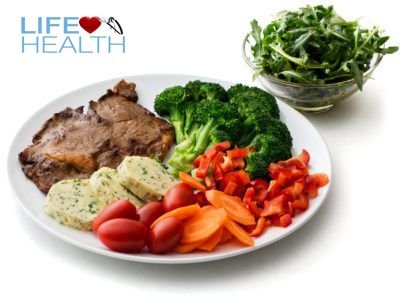
Perhaps the most exciting part about this diet, besides losing a great deal of weight, is the fact that once you reach your goal weight you can eat anything you want, anytime you want, just as long as you do not exceed your BMR.
Seriously…. anything you want! I have just a little over 1900 calories I get to eat every day…and I love it.
I regularly eat cheeseburgers and pizza…and there is not a night that goes by that I’m not eating Ben & Jerry's ice cream before bed.
My body doesn’t care if I eat nothing but carbs, protein or fat. It only cares that I give it the right amount of calories every day.
My friends and family think I have some kind of advanced genetic makeup because I don’t gain weight by eating those things…but it all comes down to science.
Now because we are trying to maximize our weight loss, we need to force the body to mobilize as much fat as possible from our fat cells.
As mentioned earlier, a low- carb diet does just that by “tricking” the body into thinking there is no food (energy) available. By eating low-carb (and low-fat in this case), the body is deprived of the glucose that it needs to survive. By keeping glucose out, the body immediately starts getting its daily energy needs
(our BMR calories) from our stored up body fat. And since we have created a calorie deficit, it knows it needs to mobilize more fat than usual.
Now, don’t be alarmed about the lack of available glucose that your body needs.
The fact is, your body is going to get that glucose from the protein in your diet through a process known as glucogenesis.
A low-carb diet ensures that your body is getting enough protein so that the protein you eat is used in the glucogenesis process—not your lean body mass.
Also worth noting is that the process of turning that protein into glucose (glucogenesis) is a highly demanding process which requires a great deal of energy—and the energy needed in this process will come from utilizing even more of your stored body fat!
As far as keeping on a low-carb diet, I recommend the following the three-phase plan.
This is not mandatory by any means, but has proven to be ultra-effective for my personal clients.
The following is an “ideal” plan. If you follow it perfectly, you will maximize the weight you lose.
But if you have a setback here or there, don’t worry too much about it.
As long as you are taking regular steps to use what you’ve learned, the weight will continue to come off. So don’t let any setbacks deter you.
Remember, nothing trumps a calorie deficit. As long as you are regularly creating a calorie deficit (below your BMR) you will be losing weight. Everything else (fasting, low-carb, exercise) is icing on the cake.
Again, this plan is a plan for a “perfect world” and it promises the most weight loss.
Deviation from this plan does not mean failure on your part. It just means that your results will be slower when you are not following the ideal plan.
DO NOT GIVE UP AFTER A SETBACK!
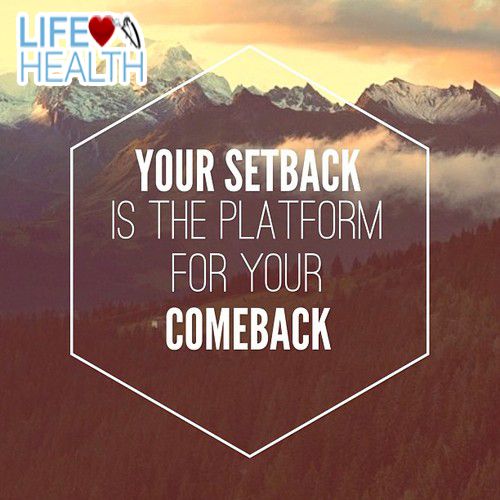
Just get back on track as soon as you can. Remember, a single setback is not going to foil all of your hard work or adherence to a diet.
While I would like to see you stay as close to zero carbs as possible, I understand that doing so can be difficult.
Sometimes, it is just impossible to get our hands on food that has zero carbs… and sometimes it is simply impossible for us to control our desire for them.
All I ask is that when/if you do eat carbs, make them a part of only your first meal of the day...and always try to stay below 30g per day max.
This 21-day diet is broken down into three phases.
Each week, you will begin a new phase. The purpose of these phases is to maximize fat loss early on while introducing more and more whole foods into your diet, eventually resulting in a nutritionally balanced and complete diet which will ensure proper health and healthy weight for the rest of your life.
After completing Phase #1 you will feel like you can do anything! And since you've finished week #1, you’ll have no problems completing week #2… and after that, week #3 will be a “walk in the park.”
As you’ve learned in the nutrient section of this guide, protein is the most important nutrient for your body.
Unlike carbohydrates, we simply cannot live without adequate amounts of protein in our diet.
In the past I've had readers calculate their lean body mass to find out their daily protein requirements. However, since you will be eating a low-carb diet, getting adequate protein will come naturally.
A Word about Fat
Keep in mind that your body only needs so much fat each day. If it senses you are getting that fat from your diet, your body will slow down the fat-burning process and first use the fat that’s available from your food.
This occurs when you eat fatty foods, as the fat from those foods enters your bloodstream as triglycerides. When triglycerides are detected in your blood, the body will temporarily put the brakes on fat-burning.
Don’t worry too much about this. A bit of fat is not going to set you back—it’s all about the ratios and the amount of calories your body needs. Most protein you eat will have trace amounts of fat in… just as you and I do.
PHASE #1 (DAYS 1-7)
As mentioned, This System is comprised of four phases.
This first phase is a regimen that I use for my clients who need to lose weight "yesterday."
It works fast and you will see a great deal of weight come off during these seven days (often in the neighborhood of 5-10 pounds, or more).
If you follow this plan, you are going to lose weight—a lot of weight. Period.
But more importantly, this first phase is also going to cleanse your body and specifically your liver, which is very likely to not be functioning at its best.
This will create an environment which will more efficiently burn fat and help you to lose significantly more weight as time goes on.
Much of this phase focuses on your gut.
It cleanses your gut and detoxifies your liver (your fat pumping organ).
Additionally, by increasing certain vitamins, you can effectively increase your insulin sensitivity and increase your body’s adrenal function, which is imperative for fat mobilization.
Keep up the great work. I love your content and wish you luck! Give it time, as it takes awhile to build up a following, but I assure that if you keep up awesome posts like all of yours so far then you will be a top earner on Steemit by New Years 💪
Thank You, I will do my best!